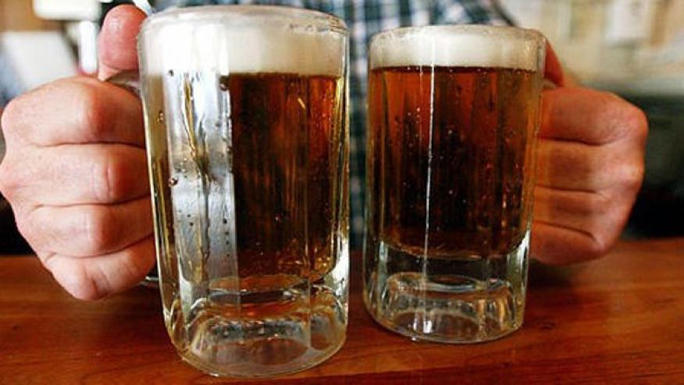
A study released January 8 by the Centers for Disease Control (CDC) in Atlanta, reports that every day, six persons, mostly men, die in the United States due to alcohol poisoning. These deaths are directly related to binge drinking, the episodic consumption of large quantities of alcoholic beverages. The weekend bender, the three-day party, the endless spring break, all can result in a predictable rate of deaths, totaling an average of 2,220 per year.
Using data collected through the National Statistics System, the researchers who conducted the study entitled “Vital Signs: Alcohol Poisoning Deaths — United States, 2010–2012,” found that three out of every four alcohol poisoning deaths are male, that approximately 75 percent of alcohol poisoning deaths are among individuals between the ages of 35 – 64, that Alaska has the highest rate of such deaths per million people, that 70 percent of these deaths are among non-Hispanic whites, and that Native Americans and Alaskan natives have the highest rates of such deaths of any population groups.
To reduce and prevent such deaths, the study researchers recommend regulating overall alcohol availability, and better enforcement of laws against illegal alcohol sales. Examining state and locals laws and practices nationwide, the study group found that these recommendations made a difference in mortality reduction.
The effects of alcohol are dose-related. The higher the BAC, or blood alcohol content, the higher the risks of accidents and death. Increased BAC affects the central nervous system, acting directly upon the brain, the spinal nerves and the peripheral nerves. Increased BAC results in loss of motor control, and reduced sensory and mental acuity and loss of basic coordination and motor control. The negative effects of alcohol upon the nervous system result in higher rates of accidents, acts of violence, sexual violence specifically, and poisoning.
In the case of alcohol poisoning, high BAC attacks key areas of the brain responsible for heartbeat, respiration, and temperature control. Alcohol poisoning is a gruesome way to die. Breathing becomes increasingly difficult, heart rate slows, skin becomes clammy. Responses become slow, and the mind becomes dull. A person may vomit, possibly resulting in pulmonary aspiration, in which choking or death may ensue as a result of the vomit going down the windpipe. Bouts of unconsciousness and seizures may occur. Extended lack of consciousness due to high BAC can and does lead to death.
Because alcohol is legal and widely available, and because it is glamorized in media, public awareness of the true hazards of alcohol is inadequate. Yet according to CDC, between 2006 and 2010, 88,000 Americans died due to alcohol. In 2012, 10,322 people in the US died in alcohol-related car accidents. In 2006 alone, alcohol’s negative effects on health cost the US economy an estimated $223.5 billion dollars in losses.
The long-term health risks of high alcohol consumption (for women, 8 or more drinks per week, for men, 15 or more drinks per week) can lead to high blood pressure, heart attack, stroke, liver disease, digestive problems, cancers of the mouth, throat, esophagus, liver and colon, learning disorders, dementia, anxiety, depression, lost productivity and serious interpersonal, family and social problems.
An old maxim states that the difference between a medicine and a poison is the dose. Ample evidence supports the consumption of one or two alcoholic drinks per day for improved cardiovascular health, and both wines and beers are good sources of beneficial antioxidants. But not all people who drink do so moderately, and the negative consequences of high alcohol consumption are severe. Today alone, six more will die from alcohol poisoning. The message is clear- drink responsibly, or don’t drink at all.

